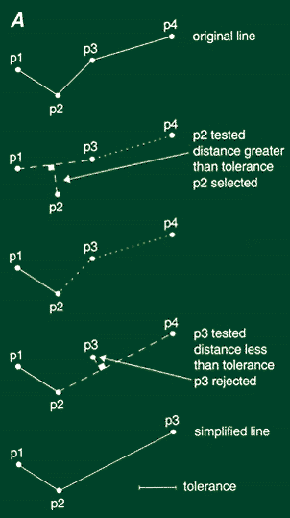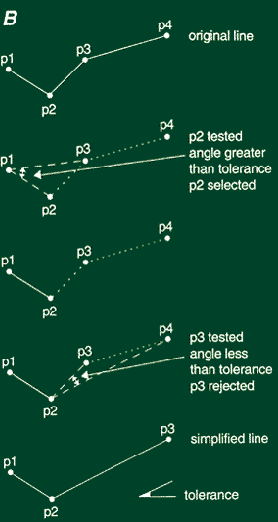
|
|
|||||

|
| Line Simplification Algorithms | |||||||||||
| Line
simplification algorithms have been developed over the years for the purpose
of 'weeding out' redundant or unnecessary coordinate information from line
features, whilst retaining the perceptual characteristics of the line. They
generally work via the application of some geometric criterion to a line's
coordinate pairs (such as distance between points or displacement from a
centre-line). Figure 1 below shows a line before and after it has been simplified,
with arrows representing the points eliminated during the process. |
|||||||||||
|
Figure 1. Line Simplification (Source: McMaster & Shea 1992) |
|||||||||||
|
|||||||||||
|
|||||||||||
Local Processing Routines
|
|||||||||||
|
Figure
2.
Local
Processing Simplifiers (Source: McMaster & Shea 1992) |
|||||||||||
 |
 |
||||||||||
|
|
|||||||||||
|
The angular tolerance algorithm is displayed on the right of the figure (B) and works via a similar process to that described above, only with an angular tolerance as measured between vectors connecting points p1 and p3, and p1 and p2. |
|||||||||||
|
Background Theory
Links:
|
Lang Simplification
Algorithm
Interactive Lessons: |
||||||||||
|
|
|||||||||||
| Click here to download all theory presented in this module | |||||||||||
|
|
|||||||||||